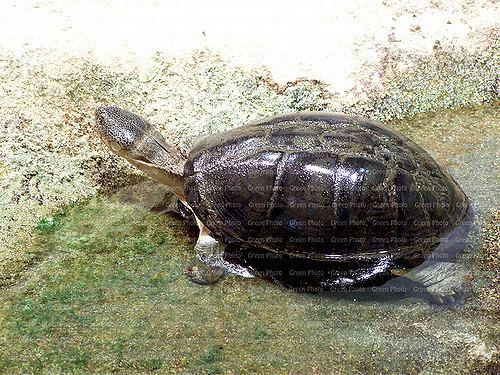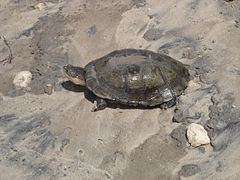Scientific name Pelomedusidae Order Turtle | Phylum Chordata Rank Family | |
 | ||
Lower classifications Pelusios, African helmeted turtle, West African mud turtle | ||
Pelomedusidae is a family of freshwater turtles native to sub-Saharan Africa, with a single species, Pelomedusa subrufa, also found in Yemen. They range in size from 12 to 45 cm (4.7 to 17.7 in) in carapace length, and are generally roundish in shape. They are unable to fully withdraw their heads into their shells, instead drawing them to the side and folding them beneath the upper edge of their shells, hence are called African side-necked turtles.

The family contains two living genera. They are distinguished from their closest relatives by a hinge in the front section of the plastron.

Pelomedusidae spend most of their time in the mud at the bottom of rivers or shallow lakes, where they eat invertebrates, such as insects, molluscs, and worms. Many species aestivate through the dry season, burying themselves in the mud.

Systematics and taxonomy
The related Podocnemididae are either treated as a distinct family, or as a subfamily (Podocnemidinae) in the Pelomedusidae. The African side-necked turtles are then also demoted to subfamily rank, as the Pelomedusinae.
As taxonomic rank is only meaningful as part of a sequence (a biological "family" has no fixed meaning on its own), both treatments are technically correct. Ultimately, the issue hinges upon the Austro-American sideneck turtles (Chelidae). These Pleurodira are less closely related to the Podocnemididae and Pelomedusidae than these are to each other. If all three are ranked as full families, the Chelidae are treated as a basal lineage, while the other two are united in the superfamily Pelomedusoidea. This treatment is preferred here, because it allows more convenient placement of prehistoric pleurodires (e.g. the Bothremydidae).
